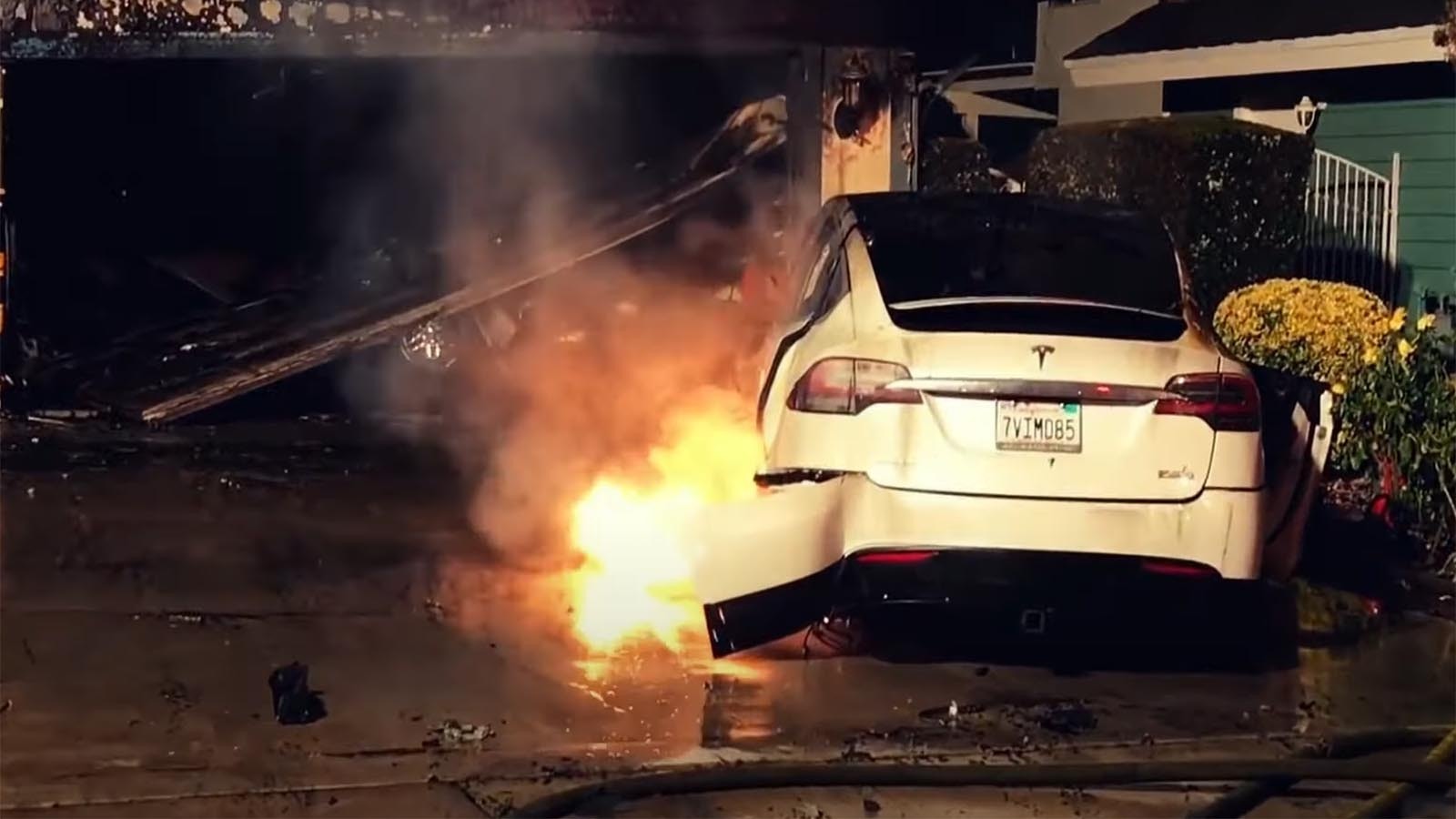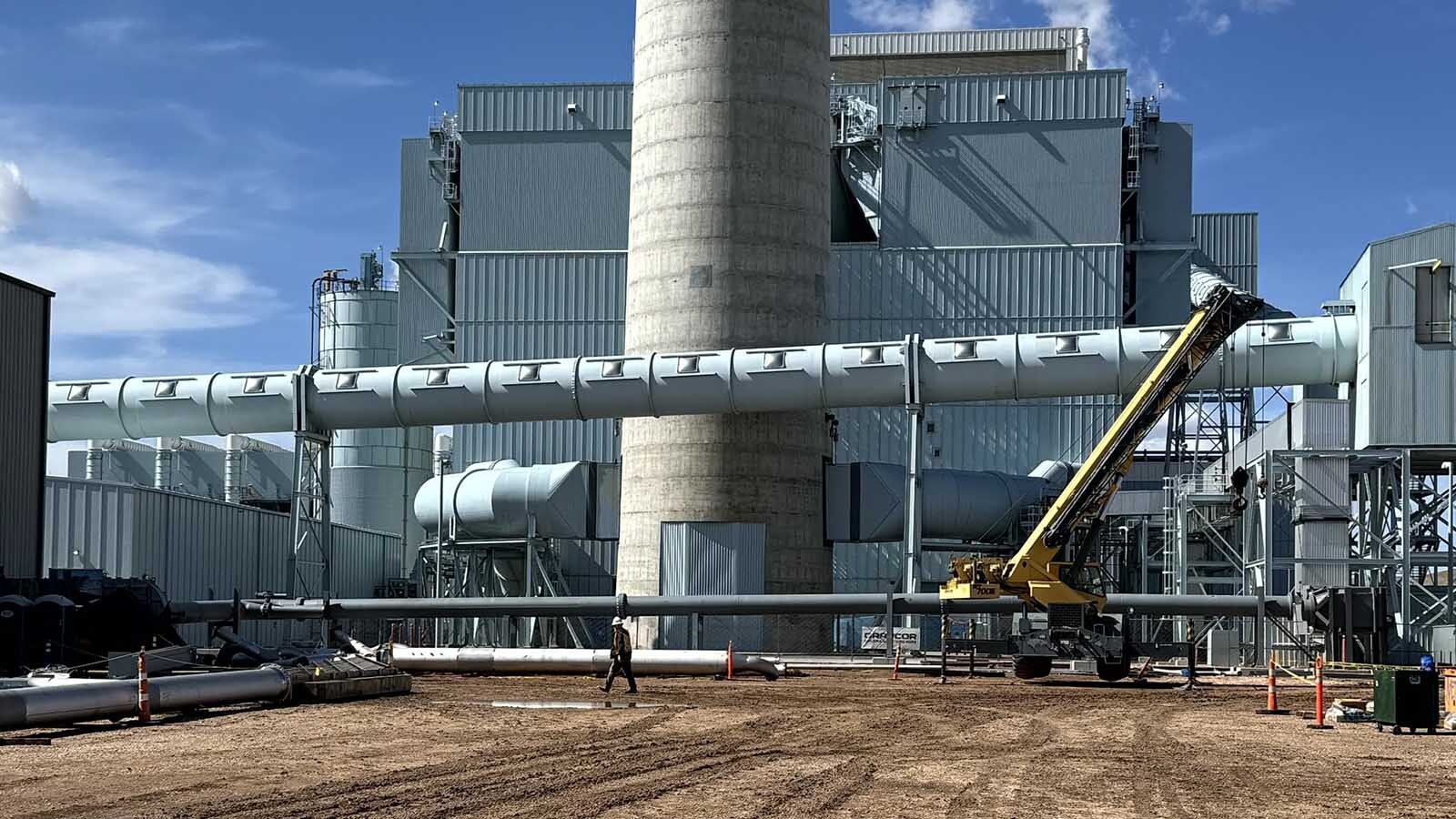Fires from lithium-ion batteries are becoming a growing concern as more electric vehicles and electronic devices come into use.
They’re found in cellphones, laptops, drones, electric scooters, electric bikes and electric vehicles. When these batteries catch fire, they burn extremely hot and are difficult to extinguish.
The city of Casper in 2021 was having so many problems with fires at its landfill it had to ask residents not to dispose of lithium-ion batteries in the trash. Batteries damaged from compaction and bulldozers running over them were creating smoldering fires.
Abnormal Operations
Lithium-ion batteries, especially large ones found in electric vehicles, have a number of safety features to prevent fires under normal operations. But there’s not a lot that can be done to stop a damaged battery from catching fire.
“If you hit a battery with a sledgehammer, it’s probably going to catch fire. If you run your Tesla into a concrete barrier, it’s going to catch fire. Through the physical damage, you’ve gotten around all those safety devices that are there for more normal operations,” said Dr. Christopher Cramer, senior vice president and chief research officer for UL Research Institutes.
Sometimes, malfunctions during normal operations can also cause batteries to blaze.
In 2017, a United Airlines flight from San Francisco to Jackson had to declare an emergency because of a battery fire from a headlamp. A flight attendant dropped the smoldering device into a glass of ice water to put out the fire.
Sometimes fires are deadly. Over the past few years, at least 11 people were killed in New York City alone. Last year, five people died in Vancouver, Canada, as a result of fires caused by lithium-ion batteries.
Thermal Runaway
Lithium-ion batteries catch fire as a result of what’s called thermal runaway.
In a recent episode of “Reactions,” a YouTube video series produced by the American Chemical Society and PBS Digital Studios, writer and host George Zaidan explains how thermal runaway happens.
Inside a lithium-ion battery is what’s called a jelly roll. The jelly roll is a strip of material called the anode, which releases electrons, and a cathode, which absorbs them. The materials are separated by a nonconducting material called a separator, because when the anode and cathode come into contact with each other, that creates a spark.
If the heat inside a lithium-ion battery gets to about 266 degrees fahrenheit, the separator melts and the cathode and anode connect. This is called an internal short circuit.
Lots of things can cause such a short. Besides damage, a malfunctioning charger can cause the battery to overcharge. If a battery is put in a microwave – for whatever reason – or otherwise overheats, it can cause a short.
When a lithium-ion battery overheats, it gives off oxygen gas, which helps that spark become a fire. This is a reason why electric vehicle fires are so hard to put out. Even though gasoline is much more energy dense than a lithium-ion battery, the battery produces its own oxygen when it burns.
Lots Of Water
As long as the temperature is hot enough, the battery continues to give off oxygen and reignite itself. Putting out a lithium-ion battery fire requires enough water to bring the temperature down so the battery stops giving off oxygen.
Firefighters putting out an electric vehicle fire will easily use 20,000 to 60,000 gallons of water before a fire is over and done with.
It’s worth noting that electric vehicles catch fire less frequently than gasoline-powered cars. Using data from the Bureau of Transportation Statistics and the National Transportation Safety Board, researchers at Auto Insurance EZ determined there were about 1,530 fires per 100,000 sales for gas vehicles and 25 per 100,000 for electric vehicles.
Hybrids, which combine both technologies, have the highest number of fires at 2,475 per 100,000 sales.
Chemical Mystery
While battery technology has improved and lithium-ion batteries have become much safer — for example, separators now melt at higher temperatures — safety is a challenge because scientists don’t actually know all the chemical reactions going on during thermal runaway.
Researchers have published many peer-reviewed journal articles on the chemical reactions that are occurring inside a lithium-ion battery, and those are the only ones that are known so far.
It’s hard to find a chemical solution to the problem, but also, as Zaidan explains in the Reactions video, battery technology is changing so quickly that any new feature might no longer apply when the composition of the battery changes.
Cramer said this complexity isn’t unique to lithium-ion batteries.
“If you take some reasonably complicated construction — let’s say it’s a mobile home trailer — and you set it on fire, there’s a lot of stuff, different kinds of compounds that are there,” Cramer explained. “And now they’re all at very high temperatures and interacting with each other. So characterizing everything that could come out of it is really challenging.”
Witch’s Brew
At UL Research Institutes, Cramer said they’ve been conducting experiments in closed environments where they initiate a thermal runaway and capture all the gasses that that battery gives off.
“You won’t be surprised to hear it’s a sort of witch’s brew of stuff,” Cramer said.
And that brew changes with different types of lithium-ion batteries.
Cramer said there are safety improvements being developed all the time. They have pressure release valves that allow gasses to escape to keep the battery from exploding. They have mechanisms that stop current from flowing if the current starts going too fast.
Don’t Microwave Cellphones
As far as putting the fire out, water is the best method, as it saps heat from the fire. However, Cramer said, one reason it takes so much water to put out an electric vehicle fire is that the battery case that protects people from getting shocked also prevents water from getting inside the battery.
Some engineers are looking at ways to allow fire suppression to get more easily inside the battery. Fires happen inside individual cells, which then spread to other cells. Engineers also are considering ways to stop that cell-to-cell transfer from happening.
In the meantime, it’s best not to drive your Tesla into a telephone pole or microwave your cellphone.





